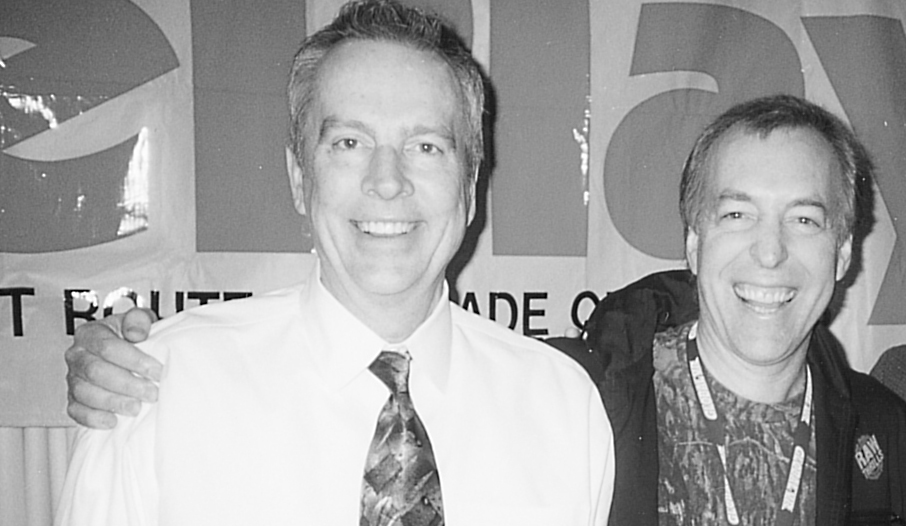Mark Struhs Retires from Raw Thrills
Nice Guys Do Finish First…And He’s Not Even Done Yet!
Set to retire from video game powerhouse Raw Thrills at the end of this year, sales and marketing veteran Mark Struhs is still writing his story. In short, this isn’t going to be retirement with a capital “R.”
“The typical thing is for someone to say, ‘I’m going to spend more time with my family’ or something like that. Well, my family doesn’t want me to do that,” Struhs said with a laugh. “I love to work and I love this business. In fact, a good example is what just happened right before this interview: I had a guy in the field call in with a question, an opportunity and a sale. That’s my ‘golf’ –– I love that!
“So, I’m not going to ride off into the sunset, even though I do have horses and that environment out in Wyoming where we live. While that is me –– a big part of me –– I’m literally not going to do that.”
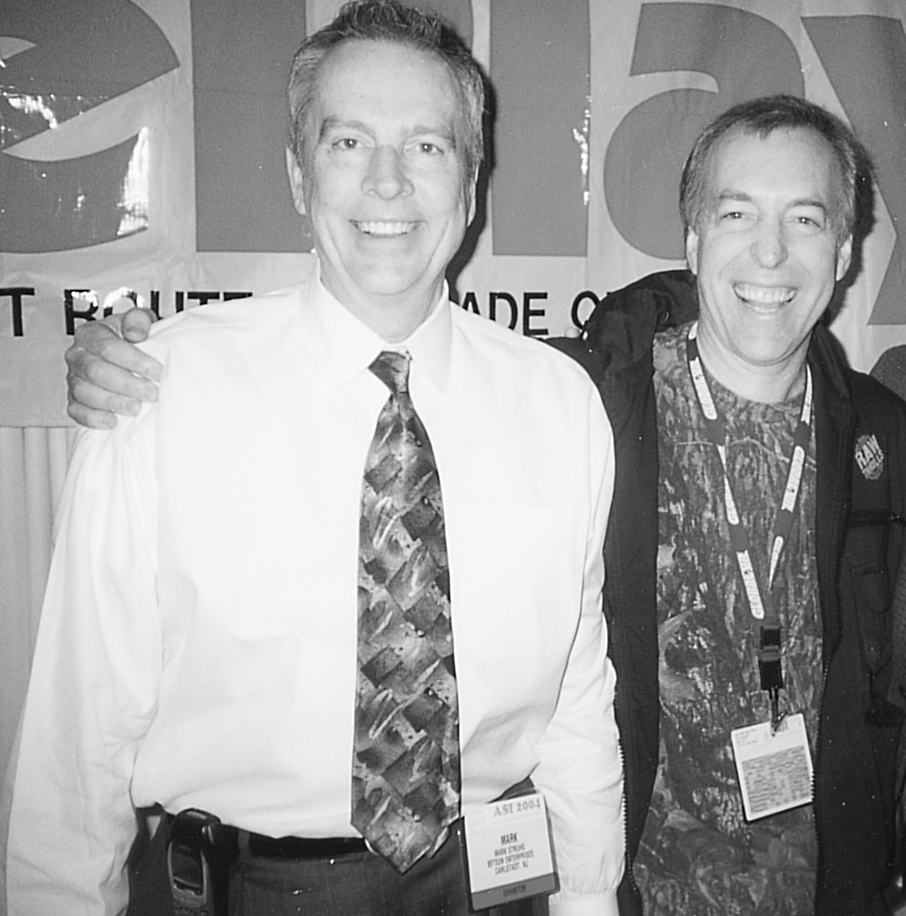
As for Raw Thrills, Struhs has left it in very capable hands. Company topper and legendary game designer Eugene Jarvis said “Mark has been a fantastic sales manager over the years and has set us up with a great team: Chris Kelly, who specializes in Asia and the Far East, and Brandon Cook, who is going to become our new sales topper.”
Jarvis continued, “Over the last few years, Mark and a couple of great operators, Rick LaFleur and Chip O’Hara, started a new company called the Really Big Crane Company to build cranes. I know he’s going to be spending a lot more time with RBCC in the future. Mark is so entrepreneurial, there’s no holding him back. But, we’re totally indebted to him. He’s a master at sales and at communicating with distributors and operators…but the best thing about him is that he’s the type of guy that’s just fun to hang out with. We’re really going to miss him, and wish him the best of luck in his new ventures!”
His CoinBiz History
Struhs, who joined Jarvis and other Raw Thrills founders in January 2003, began his sales and marketing career in the prior Millennium in the institutional sales division of consumer giant Procter & Gamble selling shortening and oil to restaurants, hospitals and the like.
“It was like a master’s degree program…very regimented and demanding with a lot of on-the-job training. I learned about distribution and I learned how to sell. More importantly, I learned how to listen,” he stated.
“A huge part of the training at Procter & Gamble was to take care of your customer and to listen,” he said. “The customer is going to tell you everything you need to know about how to sell them if you just listen.” Those initial skills and that keen insight have served him well ever since.
In 1980, he met Dynamo’s Bill Rickett, the Texas-based foosball and pool table builder. Rickett had bought out his partner and was looking for a sales manager to join him and H.L. Coats in the running of the factory. He found just the guy he needed in Mark Struhs. Together, they led the company from a sixth-place market position to what he described as a “strong #2” behind leader Valley. (The two companies would later merge into the Valley-Dynamo we know today.)
“It was an amazing and fascinating journey,” Struhs said.
In the 1980s as video games evolved, he said, “We had the right capabilities at the right time and became a contract manufacturer for the Japanese companies that didn’t want to have their own factory in the U.S.” He and Rickett traveled to Japan to seek out this business, ending up building all the video games for SEGA, Data East, Tecmo and eventually Namco, among others, totaling many thousands of games over a 10-year period.
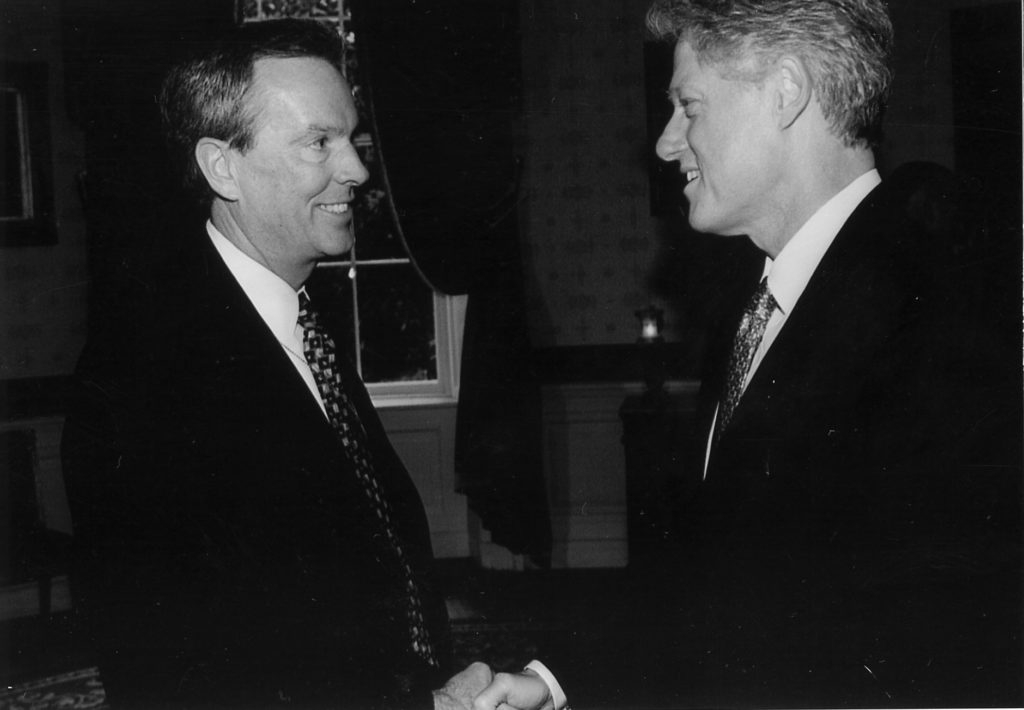
After 18 years at the company, Struhs said it became time to leave Dynamo. When RePlay ran an article about his departure, Midway’s Ken Fedesna called and asked if he would come to Chicago to meet with him and Neil Nicastro. Hired as VP of sales and marketing, Struhs handled sales for Midway and Atari video games and was also involved in the WMS side of the business’ pinball machines. As time went on, the company leadership decided to turn their attention to the consumer market and gaming, shuttering pinball and video operations and eventually becoming, as WMS, one of the largest slot machine makers in the world.
“We did an amazing amount of volume in Midway’s last year –– over 90 million dollars’ worth –– showing that it was still a very viable business model and industry,” he said. But, those at the top didn’t feel the coin-op business was compatible so, they shut the business down on July 1, 2001. The only two people left were Struhs at the Midway offices and Don Hassler, the executive VP who oversaw the company’s 250,000-sq.-ft. factory in Waukegan, north of Chicago.
For six months, Struhs focused on selling the parts business to Happ, collecting receivables and selling off the last inventory (the remaining Cruis’n Exoticas and Arctic Thunders went out the door in just a week). After he was out of Midway, Struhs worked as a consultant to help them liquidate the leftover game components.
“The best way to get rid of a game component is to build that game, right? That was the only way that had any value. So, we ended up building several thousand games,” he recounted. Struhs had a novel idea to simplify the process: work with one dealer who would act as the “master distributor” –– this became Betson –– who would, in turn work with the various other distributors throughout the country to move this product.
Re-Enter Eugene
Struhs was with Betson at a tradeshow booth selling those final games when none other than Eugene Jarvis walked up.
Said Jarvis, “They were selling Cruis’n Exotica, which was my game, and I thought, ‘Whoa…this is cool!’ Here was this game that ‘died’ with Midway having another life! It became a full-on entrepreneurial thing for video games. There was Mark, asking me what I was doing now and me answering, ‘Well, there’s this new video game company,’” he laughed.
Struhs said he got a call from Jarvis about what he was doing, though Jarvis thinks it might have been Struhs who actually pitched the idea of working together, “especially since he was the ‘sales pitch guy.’ He probably said, ‘Hey, you’re making a video game. I can sell that!’ It was probably as simple as that.”
Either way, both were clearly intrigued with what the other was doing. A lunch meeting later with Jarvis and a few others like Andy Eloff, and the wheels were put in motion.
“In those days,” Struhs said, “it wasn’t even called ‘Raw Thrills’…there was no name. It was just a few guys in a strip center in Skokie, Illinois. Eugene had me look at this screen which was Target: Terror and then said they were working on a driving game, which went on to become Fast and Furious. It was a fascinating time. Raw Thrills came out of the vacuum Midway left when they exited the business. There was so much pent-up demand and here I was the sales guy who had the easiest job in the world.
“The credit goes to Eugene and the other guys who put Raw Thrills together at the very beginning. It was courageous and, in a way, Midway’s closure created an amazing environment for them,” he said.
To make it work and keep the fun and magic alive in game design, they set out to use a “hybrid” business model at Raw Thrills, stripping away anything that wasn’t game design and development.
“When Eugene started the company with the other founders,” Struhs said, “he wanted to outsource as much as possible, leaving the most fundamental things he felt the team was really good at which was game design. He wanted to focus on that and outsource everything else, and that’s what he did. That had never been done before.” Among those they turned to was contract manufacturer Grand Products to build the games. (Partec Inc. produces their games today.) Struhs also introduced Raw Thrills to Bob Geschine at Betson, and to other key domestic distributors. By providing world-class service and distribution for Raw Thrills games, Betson added the final piece of the puzzle for Raw Thrills’ success.
“What I brought to the table was a knowledge of sales in this industry, how operators function and so on,” Struhs said. “I also brought an international outlook which, no pun intended, was a game-changer for Raw Thrills. I believed in being born global as a company. As you go into business, from day one you’re a global company with customers all around the world.
“As vice president of sales and marketing at Midway, I handled that global presence for Midway and Atari video games as well as Williams pinball. And before that when I was at Dynamo, we did a lot of business internationally. We even won the President’s “E Award” around 1995 in recognition of what we were doing in exports,” he said.
Struhs also was chair of AAMA’s Foreign Business Development Committee and worked closely with Bob Fay. “He and I traveled the world and had other guys involved with us, including Frank Ballouz, Tom Kane, Ron Carrara and Ralph Coppola. We were kind of pioneers a bit, honestly. So that was something I brought to the Raw Thrills table for sure. Today, most manufacturers are pretty astute at international business.”
Explained Jarvis, “He was instrumental in getting our export business going, traveling to China, Europe and so forth. Also, back in the 1980s when he was a board member with AAMA, he helped set up what have become four or five of the biggest international arcade game trade shows in the world. That’s something that has really helped the industry over the years. That’s a little-known fact.”
His impact also spread when Raw Thrills brought George Petro’s Play Mechanix design studio, creators of Big Buck Hunter, into the company in 2006. (Jarvis and Petro had known each other since the early ’80s, working together on the NARC video game in 1987.) Among Struhs’ contributions specific to Big Buck Hunter was putting together a deal to get one of those games into every Cabella’s hunting/sporting goods store.
“Mark basically put us on the map for close to 20 years, selling, promoting and telling the world about Raw Thrills,” Jarvis said. “Mark is also a tireless traveler. I think he has something like 4 million lifetime miles on American alone. He just loves people and the industry and likes nothing better than to just hop on a plane for 15 hours to Dubai to go sell games.
“You have to have people like Mark,” he continued, “because you have to promote and tell the world about your games. It’s funny…as an engineer, I always thought that if you make a great game, people would just buy it. But it doesn’t work that way! Once you have like a factory with 300 games in inventory, you realize they don’t exactly sell themselves and think, ‘maybe we need a sales department,’” he laughed.
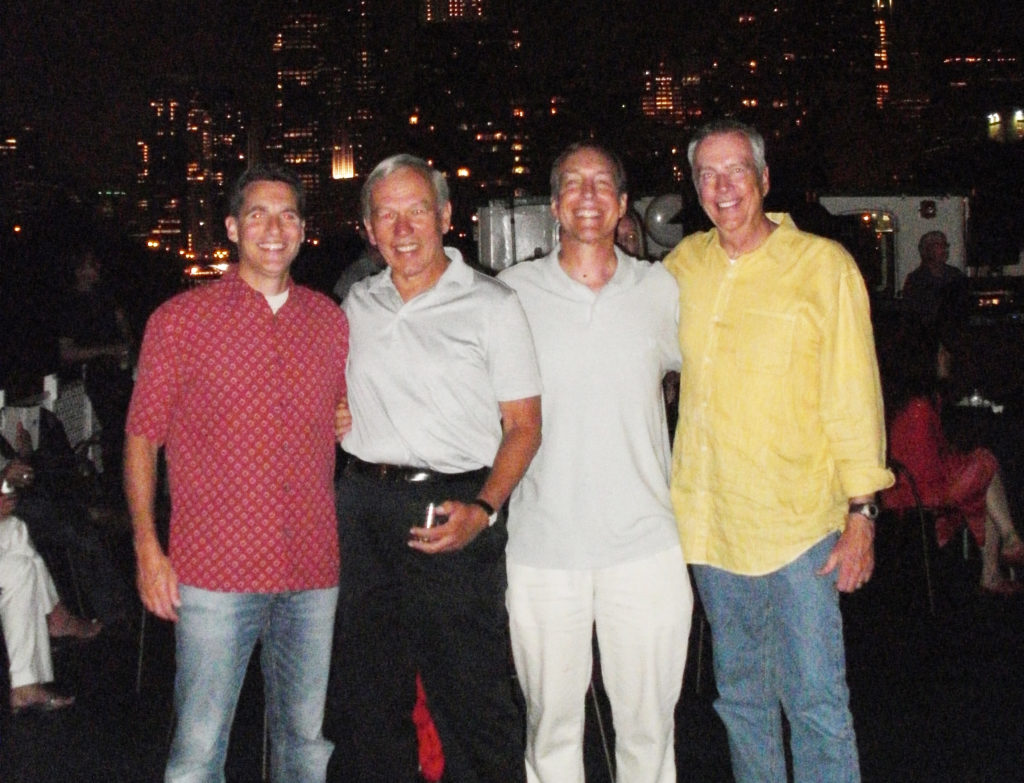
The Magic
Struhs’ enthusiasm about what they do at Raw Thrills is palpable. “I love it. Their excitement over the technology and new things that they can do, is creative, childlike and fun. They think, ‘Wouldn’t it be fun if we did this?’ It has been an amazing experience to witness that. Maybe that’s part of the magic that Eugene and the founders had that is still very much alive today.
“They’re going to continue to do great things. In fact, they don’t know that they can’t do things so they just do them and love this business,” he said.
Struhs continued, “While I can talk about these and other things I’ve done in my career, I’m humble because I was blessed with the opportunity to work with some extremely talented people and at an amazing time. Being at Raw Thrills has been an incredible chapter of my life. I’ll never forget it.
“I’m very grateful to have the opportunity to work with Eugene, George Petro, Andy Eloff, Josh Sharpe and a whole bunch of other people. It was really cool –– they make great innovations and great products. Technology is something they just live and breathe. They’re on the cutting edge and they made my job amazingly easy.
“I was just able to facilitate. I brought the people side of the business to the table,” he said. “But the real core, the secret sauce…all of the magic that Raw Thrills has brought to this industry… is not me. It’s those people. It was an incredible blessing that I was able to be able to do that.
Struhs added, “I hope I did some good for the people at Raw Thrills and our customers. It’s really about the game…and the game is about the people who thought of it and put it together using their knowledge to use the latest technology and do whatever it takes. I mean, how much does ‘fun’ weigh? It’s a ridiculous question, right? How do you put fun in something? That’s the magic. That’s Raw Thrills.”
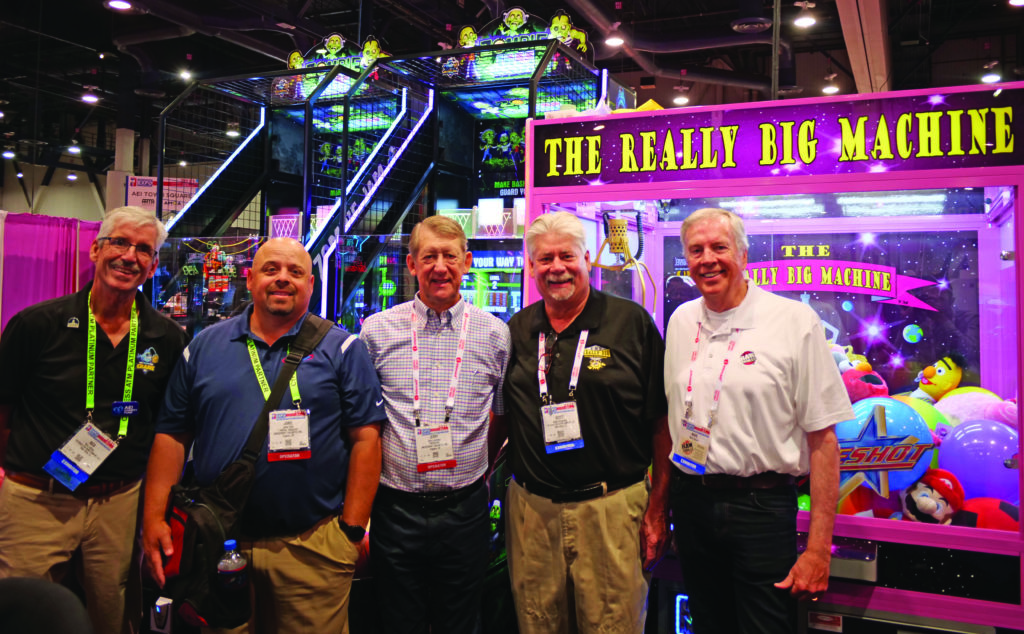
The Next Chapter
Now with Struhs focusing specifically on the route operator within the framework that is the Really Big Crane Company, he said “it’s like I’m almost back to my roots. I have always been very much street operator-oriented. You don’t get more street-oriented than building pool and foosball tables, right? In the 1980s and ’90s there was a lot of consolidation in the industry and out of that came the business we see today. You have many of what you might call ‘big box’ FEC companies and they’re amazing. There are fantastic business people in that group. Also, through all of that, the street operator survived, and he and she morphed. They’re very entrepreneurial and responsive to the marketplace and I love that. It’s fascinating and it’s a lot of fun to work with those people so I’m really looking forward to that next chapter in my journey.
Very bullish on the route business, he added, “I think it’s a segment of the business that is poised for tremendous upside opportunity, driven in large part by second, third and fourth generations carrying on in this industry. They’re doing business entirely differently than the one or two ahead of them. They’ve changed and they’ve thrived –– it’s a very exciting time. And, we continue to attract new people to this business.”
As RePlay spoke with Struhs, he and the Really Big Crane Company team were heading to Orlando for IAAPA. He said the company wasn’t going to unveil brand-new games, but we do have a lot of things going on the product side. “Like most good companies, we’re constantly evolving.” (Their game roster includes The Really Big Machine, Find A Key, Buzz & Win and Zombie Jam.)
Outside of showing RBCC games, the next big thing they were demonstrating in Orlando was Crane Connect, a management system from Play Mechanix specifically oriented to cranes allowing an amusement operator to manage one or 100 of those machines using his phone. It’s the first part of a new payment system being developed by Play Mechanix that will be launched soon.
So even though Struhs is “moving on,” the deep relationships he’s built with Raw Thrills, Play Mechanix and now the Really Big Crane Company –– and beyond –– will keep him busy doing what he loves. As he says, “This has been fun and it’s not over yet!”

